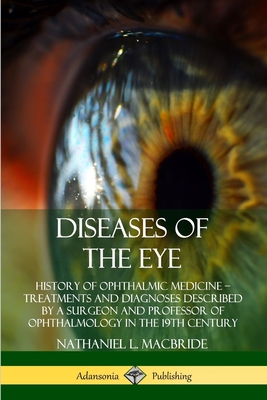

Navigating Clarity: Exploring Innovations in Ophthalmology Treatments
Ophthalmology treatments have undergone significant innovations, offering new hope and improved outcomes for individuals facing a range of eye conditions. From advancements in surgical techniques to groundbreaking therapies, the landscape of ophthalmology is evolving, ushering in a new era of vision care.
Revolutionizing Vision Correction: LASIK and Beyond
The introduction of LASIK (Laser-Assisted In Situ Keratomileusis) marked a revolutionary shift in vision correction. This minimally invasive procedure utilizes laser technology to reshape the cornea, correcting refractive errors like nearsightedness and astigmatism. Beyond LASIK, emerging technologies such as SMILE (Small Incision Lenticule Extraction) continue to refine and enhance the precision of vision correction procedures.
Intraocular Lenses: Advancements in Cataract Surgery
Cataract surgery has seen remarkable advancements, particularly in the realm of intraocular lenses (IOLs). Traditional cataract surgery involves replacing the clouded lens with a standard IOL, but recent innovations allow for multifocal and toric lenses. These advanced lenses address not only cataracts but also correct presbyopia and astigmatism, offering patients improved visual acuity and reduced dependency on glasses.
Innovative Therapies for Retinal Disorders: A Sight-Saving Frontier
The treatment landscape for retinal disorders has expanded with innovative therapies. Intravitreal injections, such as anti-VEGF (Vascular Endothelial Growth Factor) medications, have become standard in managing conditions like age-related macular degeneration (AMD) and diabetic retinopathy. Emerging treatments, including gene therapies and sustained-release implants, hold promise for even more effective and long-term solutions.
Corneal Cross-Linking: A Game-Changer for Keratoconus
Corneal cross-linking has emerged as a game-changer in the management of keratoconus, a progressive corneal disorder. This procedure involves applying riboflavin drops to the cornea and exposing it to ultraviolet light. The process strengthens the corneal collagen fibers, halting the progression of keratoconus and preventing further visual deterioration.
Glaucoma Management: From Medications to Minimally Invasive Procedures
In the realm of glaucoma management, the focus has shifted from traditional medications to innovative, minimally invasive procedures. Micro-invasive glaucoma surgeries (MIGS) aim to reduce intraocular pressure and slow the progression of glaucoma with fewer complications than traditional surgeries. These procedures offer new avenues for managing this sight-threatening condition.
Advancements in Pediatric Ophthalmology: Early Intervention for Lifelong Vision
Pediatric ophthalmology has witnessed advancements in early interventions for various eye conditions affecting children. From non-invasive therapies for amblyopia (lazy eye) to innovative surgical techniques for congenital cataracts, these treatments aim to preserve and optimize vision during crucial developmental stages.
Neuro-Ophthalmology: Integrating Technology for Diagnosis and Treatment
The intersection of neurology and ophthalmology, known as neuro-ophthalmology, has embraced technological advancements for both diagnosis and treatment. Imaging techniques such as optical coherence tomography (OCT) and electrophysiological tests aid in the evaluation of optic nerve disorders and other neurological conditions affecting vision. This integrated approach enhances precision in diagnosis and tailored treatment plans.
Personalized Medicine in Ophthalmology: Tailoring Treatments to Individuals
The era of personalized medicine has extended its reach to ophthalmology. Genetic testing and molecular diagnostics now play a role in identifying individuals at risk for hereditary eye conditions. This information allows ophthalmologists to tailor treatments based on a patient’s genetic profile, optimizing therapeutic outcomes and minimizing potential side effects.
Teleophthalmology: Accessible Eye Care Anywhere
The integration of telemedicine into ophthalmology, known as teleophthalmology, has facilitated accessible eye care regardless of geographical constraints. Remote consultations, virtual screenings, and telemonitoring of certain eye conditions allow patients to connect with eye care professionals conveniently, promoting early detection and intervention.
Empowering Vision Health with Ophthalmology Treatments
In conclusion, the advancements in ophthalmology treatments are transforming the landscape of vision care. From precision surgeries to innovative therapies, these breakthroughs are empowering individuals to preserve, restore, and enhance their vision. Explore Ophthalmology Treatments for deeper insights and stay informed about the latest developments shaping the future of eye care.
